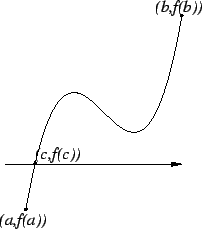

The intermediate value theorem was first proved in 1817 by Bernard Bolzano (1781-1848). However Bolzano published his proof in a rather obscure Bohemian journal, and his work did not become well known until much later. Before the nineteenth century the theorem was often assumed implicitly, i.e. it was used without stating that it was an assumption.